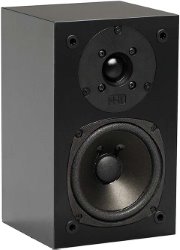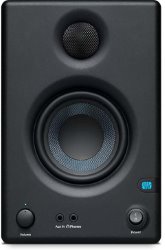NHT SuperZero 2.1 vs. Presonus Eris E3.5
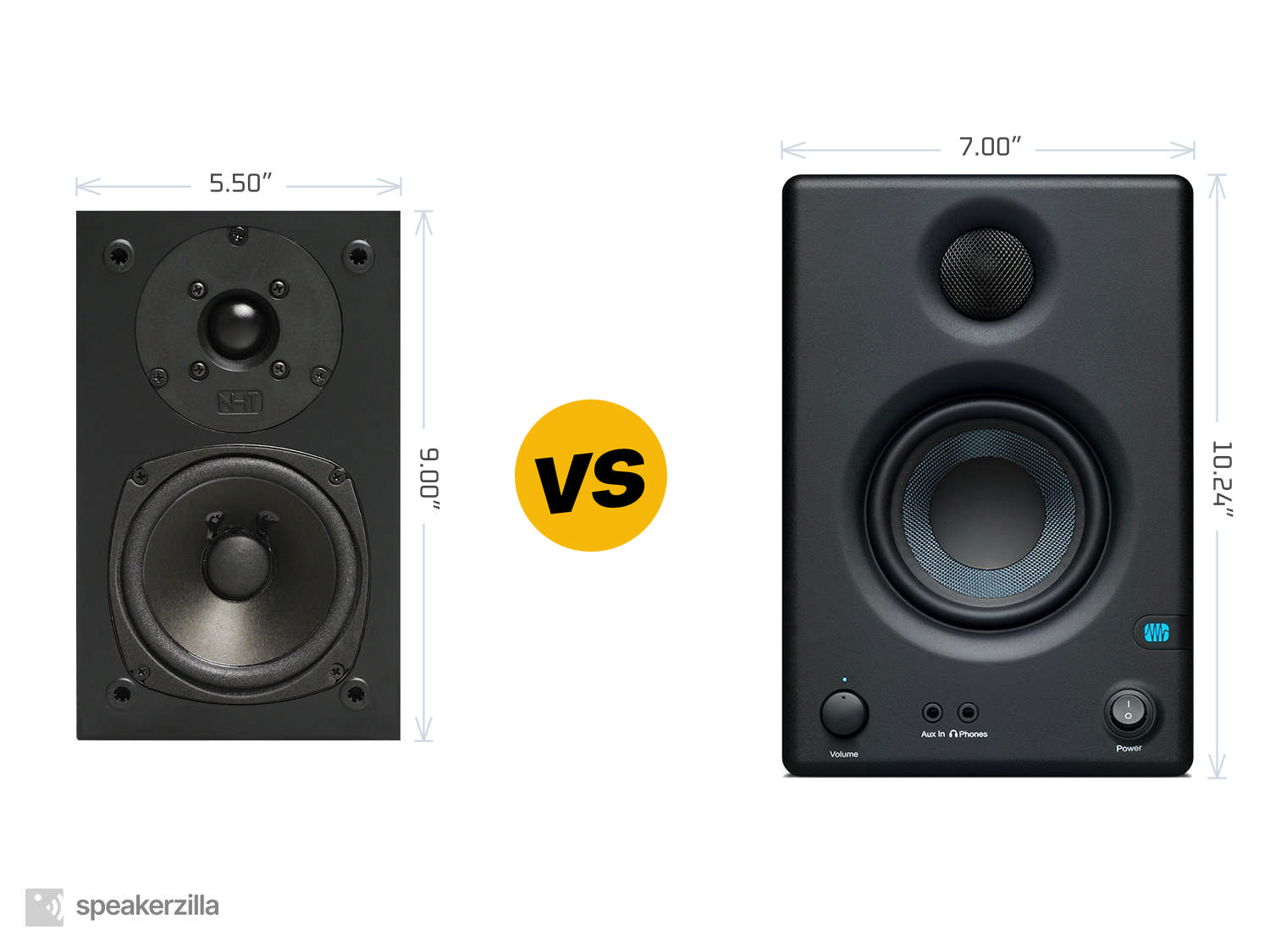
| NHT SuperZero 2.1 Mini-Monitor Speaker | Presonus Eris E3.5 3.5” Near Field Studio Monitor |
| MSRP | |
| $300 | $100 |
| Dimensions (H × W × D) | |
|
9.00” × 5.50” × 5.00” 229mm × 140mm × 127mm |
10.24” × 7.00” × 7.68” 260mm × 178mm × 195mm |
| Power Type | |
| Passive | Powered |
| Frequency Response | |
| 85-20,000 Hz | 80-20,000 Hz |
| ASR Score | |
| 3.4 | 1.5 |
| ASR Score w/Subwoofer | |
| 6.7 | 4.3 |
|
Amazon.com
|
Amazon.com
|
Key Takeaways
TLDR Summary: In the realm of compact speakers, the NHT SuperZero 2.1 Mini-Monitor and PreSonus Eris E3.5 serve distinct audiences. The SuperZero, a legendary audiophile favorite, boasts a refined, neutral sound signature ideal for purists in a minimalist design. Conversely, the Eris E3.5, a near-field studio monitor, offers a more utilitarian look with built-in amplification and tuning controls aimed at content creators needing accuracy for mixing. While both deliver impressive clarity for their size, the choice hinges on use: pristine listening pleasure goes to NHT, while hands-on audio production tilts toward the Eris E3.5.
Speaker Comparison
When it comes to high-fidelity audio, the devil is in the details. That's particularly true when sizing up compact speakers like the NHT SuperZero 2.1 Mini-Monitor and the PreSonus Eris E3.5 Near Field Studio Monitor. Both are diminutive in stature but promise to deliver a sound that belies their size. In the quest for the perfect small-room audio solution, these two contenders have different strengths and cater to slightly different audiences, which makes comparing them an interesting exercise for any audiophile.
The NHT SuperZero Legacy
The NHT SuperZero 2.1 is the latest incarnation of a classic design that has been pleasing ears for decades. Its acoustic suspension design is a rarity in the current market, which tends to favor ported designs for their efficiency and bass response. However, NHT's choice to stick with a sealed box allows the SuperZero 2.1 to deliver remarkably tight and accurate bass without the boominess or port noise that can sometimes plague ported systems. The 4.5-inch long-throw pulp cone woofer and 1-inch silk dome tweeter are modest in size but are highly optimized to work with the acoustic suspension design to produce a coherent and natural sound.
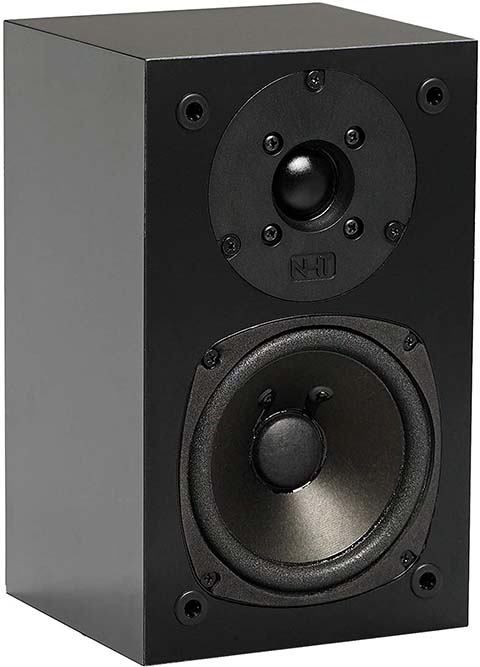
 (at Amazon.com)
(at Amazon.com)The Eris E3.5 Approach
The PreSonus Eris E3.5, on the other hand, is designed with the budding home studio owner in mind. It sports a ported enclosure that's tuned to maximize efficiency and extend the low-end response. The Eris E3.5's 3.5-inch woven composite drivers are paired with a 1-inch ultra-low-mass silk dome tweeter, which together produce a sound that is detailed and clear. With integrated tuning options like the Acoustic Tuning controls at the back, users can tweak the response to compensate for room anomalies, making them highly adaptable to different environments.
Sound Quality and Aesthetics
When it comes to sound quality, the NHT SuperZero 2.1 offers a level of neutrality that is hard to find in speakers of its size and price range. It's a speaker that doesn't favor one part of the frequency spectrum over another, which is a trait that can be both a blessing and curse depending on the listener's taste. The SuperZero 2.1 is unforgiving with poor recordings, as it reveals flaws ruthlessly. In a well-treated room and with high-quality recordings, however, it shines, delivering sound that is clean, detailed, and expansive.
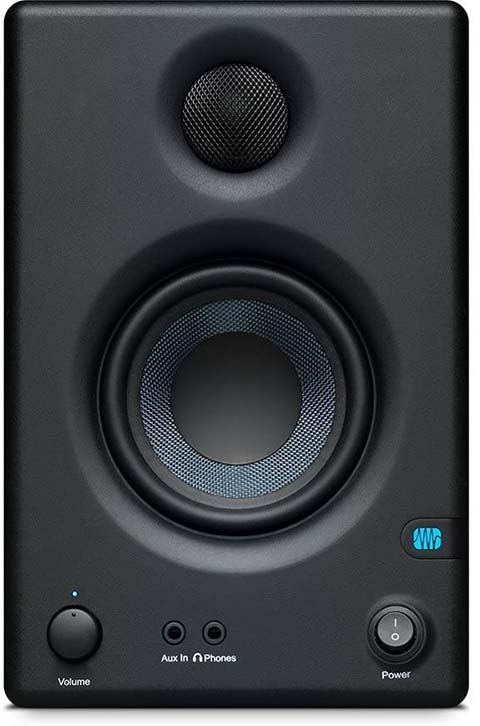
 (at Amazon.com)
(at Amazon.com)The Eris E3.5, conversely, has a slightly more colored sound, with a bit of emphasis on the low-mid frequencies that gives it a warm and inviting character. This coloration can be beneficial in a studio monitor, as it allows artists and audio engineers to hear how their mixes might sound on consumer audio equipment. For the casual listener, this warmth can be pleasing and forgiving, making everyday recordings sound fuller and richer.
Compare to similar speakers
Space and Versatility
Both speakers are compact and easy to place, but their designs cater to different types of spaces. The SuperZero 2.1's sealed design gives it an edge in smaller rooms where the control of bass is crucial. With no port to worry about, placement near walls is less troublesome, making it a great choice for tight spaces or as satellite speakers in a surround setup. Its unassuming, matte black finish blends neatly into most decor.
The Eris E3.5 is a touch more versatile in terms of placement thanks to the acoustic tuning controls, though its ported design means it can be more sensitive to placement relative to walls and corners. Its utilitarian, studio-centric appearance is more functional than fashionable, with a vinyl-laminated finish that's built to withstand the occasional knock or spill. The front-panel volume control and headphone jack are practical additions for those who need quick access to adjust levels or listen privately.
In conclusion, the NHT SuperZero 2.1 and the PreSonus Eris E3.5 offer two different philosophies in compact speaker design, each with its own set of strengths. The SuperZero 2.1 is a purist's choice, delivering honest and neutral sound that's best suited for audiophile listening in controlled environments. The Eris E3.5 is the pragmatic studio companion, offering warmth and adaptability for a range of listening scenarios and recording needs. Choosing between the two will largely depend on your listening habits, room characteristics, and whether your priority lies in critical listening or creative indulgence.
- NHT SuperZero 2.1 reviews and FAQs
- Presonus Eris E3.5 reviews and FAQs
Check Current Prices: |
|
|
Amazon.com
|
Amazon.com
|
Affiliate Disclosure: As an Amazon Associate, we earn from qualifying purchases.
